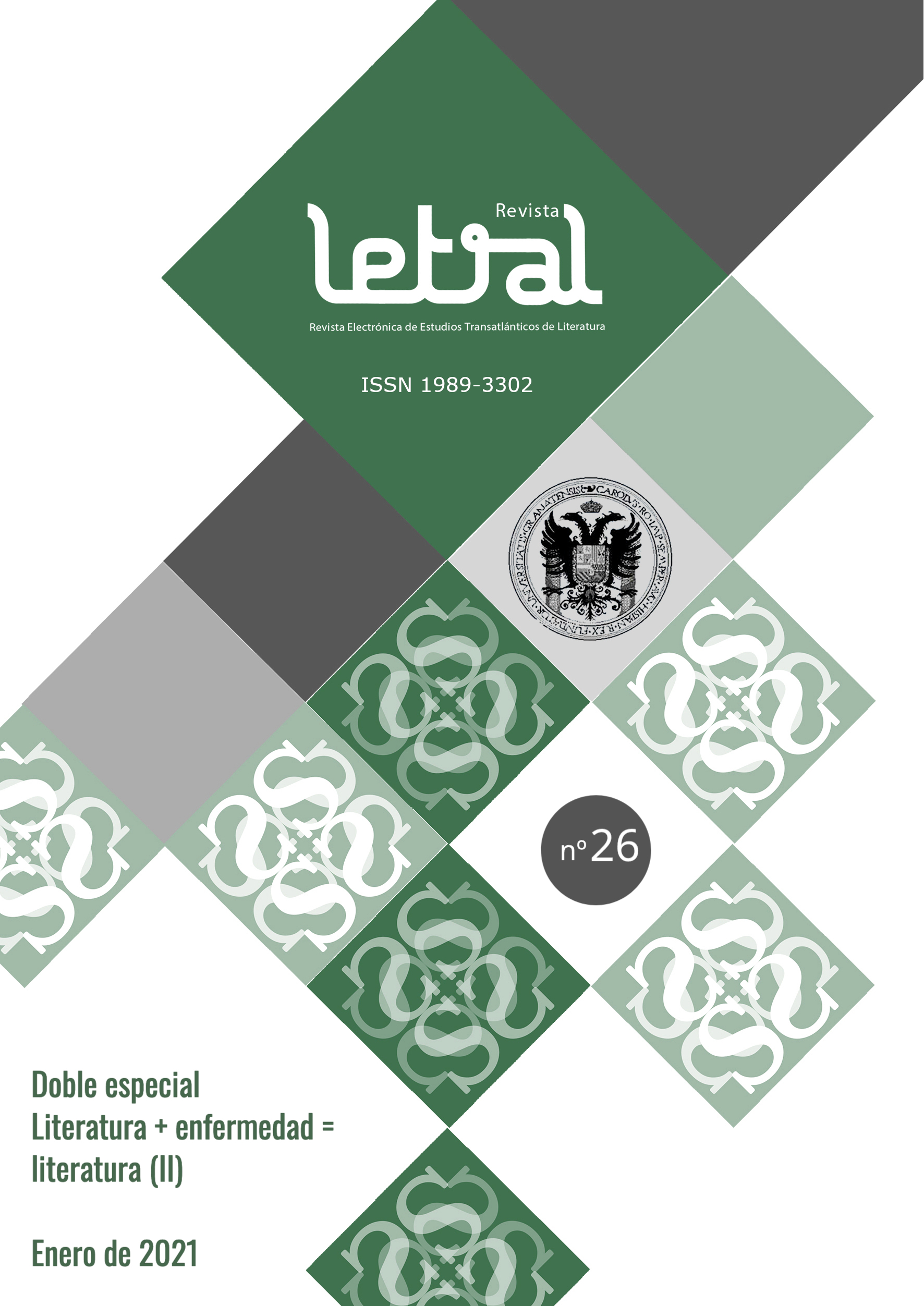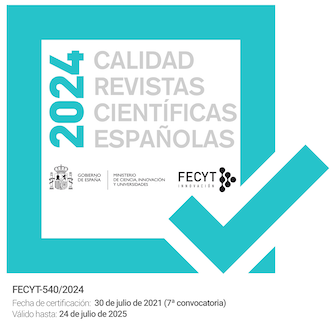La influencia de la formación recibida en la realización y la difusión de contenidos audiovisuales en los adolescentes de Iberoamérica
DOI:
https://doi.org/10.30827/rl.v0i26.17725Palabras clave:
competencia mediática, adolescencia, Iberoamérica, realización audiovisual, producción audiovisual.Resumen
Uno de los pilares de la formación adolescente es la construcción de la identidad; en ese sentido, las plataformas audiovisuales en línea –como YouTube–, ejercen una destacada influencia, al constituirse como puntos de encuentro para jóvenes con preocupaciones y puntos de vista similares. En este estudio no experimental, con un alcance correlacional y un enfoque cuantitativo, hemos trazado una encuesta a 3.195 adolescentes de Brasil, Colombia, España, México, Perú y Portugal. En los resultados, contrastamos la hipótesis general, es decir, la existencia de un efecto indirecto de la influencia en la realización o producción de videos, sobre la difusión de productos audiovisuales, a partir de la mediación ejercida por la formación recibida y la moderación del tipo de centro educativo al que se adscriben los jóvenes consultados.
Descargas
Citas
Abril, J. A. & León, G. A. “Nueva cultura audiovisual y ciberculturas juveniles: sociabilidad y apropiación mediática de jóvenes en el ciberespacio”. Revista Internacional de Cultura Visual, nº 3, vol. 2, 2016, pp. 101-109. https://doi.org/10.37467/gka-revvisual.v3.320
Aguaded, I. & Pérez, A. “Estrategias para la alfabetización mediática: competencias audiovisuales y ciudadanía en Andalucía”. New Approaches in Educational Research, nº 1, vol. 1, 2012, pp. 25-30. https://doi.org/10.7821/naer.1.1.22-26
Aguaded, I.; Marín, I. & Caldeiro, M. C. “Desarrollo de la competencia mediática en el contexto iberoamericano”. LETRAL, nº 20, 2018, pp. 156-182.
Arends, I. S., & Hordijk, M. A. “Physical and Virtual Public Spaces for Youth: The Importance of Claiming Spaces in Lima, Peru”. En Nairn, K. & Kraftl, P. (Eds). Space, Place, and Environment. Geographies of Children and Young People. Singapur, Springer, 2016, pp. 1-19.
Barredo Ibáñez, D. “Religious Commitment, Subjective Income, and Satisfaction towards the Functioning of Democracy in Latin America. A Media-tion Analysis Model Based on Latinobarómetro”. Religions, nº 9, 2018, pp. 1-12. https://doi.org/10.3390/rel9060198
Barredo Ibáñez, D.; De la Garza, D.; Freundt, Ú.; Pinto, K. T. & Días, D. L. “Cuestionando la existencia del prosumer en Iberoamérica. Un estudio sobre los universitarios de Colombia, Perú, Chile y España”. LETRAL, nº 20, 2018, pp. 183-205.
Caldeiro, M. C. & Aguaded, J. I. “«Estoy aprendiendo, no me molestes» la competencia mediática como forma de expresión crítica de nativos e inmigrantes digitales”. Redes.com, nº 12, 2015, pp. 27-45. https://doi.org/10.15213/redes.n12.p26
Comisión Europea. The European Digital Competence Framework for Citizens. Luxemburgo, Unión Europea, 2016.
De la Fuente, J.; Lacasa, P. & Martínez-Borda, R. “Adolescentes, redes sociales y universos transmedia: la alfabetización mediática en contextos participativos”. Revista Latina de Comunicación Social, nº 74, 2019, pp. 172-196. https://doi.org/10.4185/RLCS-2019-1326
DOUE. Recomendación sobre la alfabetización mediática en el entorno digital para una industria audiovisual y de contenidos más competitiva y una sociedad del conocimiento incluyente. 2009. Web. 20 Ago. 2009.
Ferrés, J. “La competencia en comunicación audiovisual: dimensiones e indicadores”. Comunicar, nº 29, 2007, pp. 100-107.
Ferrés, J. & Piscitelli, A. “La competencia mediática: propuesta articulada de dimensiones e indicadores”. Comunicar, nº 38, vol. XIX, 2012, pp. 7582.
Hayes, A. F. Introduction to mediation, moderation, and conditional process analysis: A regression-based approach . Nueva York, Guilford Press, 2018.
Lazer, D.; Baum, M.; Benkler, Y.; Berinsky, A.; Greenhill, K.; Menczer, F.; Metzger, M.; Nyhan, B.; Pennycook, G.; Rothschild, D.; Schudson, M.; Slogan, S.; Sunstein, C.; Thorson, E.; Watts, D. & Zittrain, J. “The science of fake news”. Science, nº 6380, vol. 359, 2018, pp. 2-4. https://doi.org/10.1126/science.aao2998
Marín, I.; Díaz, E. & Aguaded, I. “La competencia mediática en niños y jóvenes: La visión de España y Ecuador”. Chasqui, nº 124, 2013, pp. 41-47.
Mateus, J. C.; Andrada, P. & Ferrés, J. “Evaluar la competencia mediática: una aproximación crítica desde las perspectivas pedagógica, política y metodológica”. Revista de Comunicación, nº 18, vol. 2, 2019, pp. 287-301. https://doi.org/10.26441/RC18.2-2019-A14
Mayurgo, C.; Moix, M.; Ricart, M. & Reñé, S. “Representación mediática y producción audiovisual adolescente”. Comunicar, nº 25, 2005, pp. 1-7.
Medina, A. & Ballano, S. “Retos y problemáticas de la introducción de la educación mediática en los centros de secundaria”. Revista de Educación, nº 369, 2015, pp. 135-159. https://doi.org/10.4438/1988-592X-RE-2015-369-293
Pérez, A. & Delgado, A. “De la competencia digital y audiovisual a la competencia mediática: dimensiones e indicadores”. Comunicar, nº 39, vol. XX, 2012, pp. 25-34.
Pérez, V.; Pastor, Y. & Abarrou, S. “YouTubers videos and the construction of adolescent identity”. Comunicar, nº 55, vol. XXVI, 2018, pp. 61-70. https://doi.org/10.3916/C55-2018-06
Ramírez, A. & González, N. “Competencia mediática del profesorado y del alumnado de educación obligatoria en España”. Comunicar, nº 49, vol. XXIV, 2016, pp. 49-58. http://dx.doi.org/10.3916/C49-2016-05
Ritzer, G. & Jurgenson, N. “Production, Consumption, Prosumption. The nature of capitalism in the age of the digital ‘prosumer’”. Journal of Con-sumer Culture, nº 10, vol. 1, 2010, pp. 13-36.
Santibáñez, J.; Campión, R. S.; Pérez, C.; Sáenz, M. & Tejada, S. “Competencia en comunicación audiovisual en un entorno digital en la enseñanza no universitaria: necesidades y carencias”. Revista Latinoamericana de Tecnología Educativa, nº 15, vol. 3, 2016, pp. 127- 139. https://doi.org/10.17398/1695288X.15.3.127
Toffler, A. La Tercera Ola. Ciudad de México, Edivisión, 1981.
Wilson, Carolyn; Grizzle, A.; Tuazon, R.; Akyempong, K. & Cheung, C.-K. Alfa-betización mediática e informacional. Curriculum para profesores. París, UNESCO, 2011.
Zacarés, J., Iborra, A., Tomás, J., & Serra, E. (2009). “El desarrollo de la identidad en la adolescencia y adultez emergente: una comparación global frente a la identidad en dominios específicos”. Anales de Psicología, nº 25, vol. 2, 2009, pp. 316-329.
Publicado
Cómo citar
Número
Sección
Licencia
Revista Letral es una publicación de acceso abierto e inmediato totalmente gratuita, tanto para quien lee como para quien publica. Los autores y las autoras no pagan ningún tipo de tasa por el proceso editorial de sus artículos. Permitimos la lectura, descarga, copia, distribución, impresión, búsqueda, enlace o reutilización con fines no comerciales de todos los trabajos publicados, siempre que se citen la autoría, la revista y el órgano editor. Recomendamos encarecidamente la difusión de los artículos en redes sociales (Facebook, Twitter, LinkedIn, etc.) y científicas (ResearchGate, Academia.edu, etc.), repositorios institucionales universitarios y otros repositorios públicos, blogs y webs personales o institucionales, Google Scholar, ORCID, ResearchID, ScopusID, etc. En cualquier caso, la propiedad intelectual de los artículos y los posibles derechos económicos derivados de ellos son exclusivamente de sus autores.














